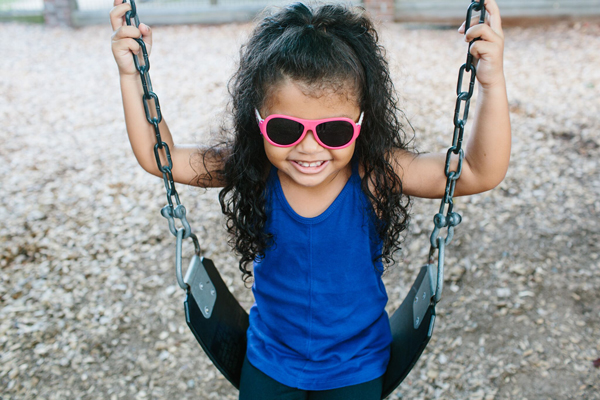Why should your child wear eye protection playing sport?
As an Optometrist I regularly receive articles and publications from our Association and associated industry. One of the recent articles really resonated with me, as a mum of two primary school age kids. Associate Professor Stephen Dain conducted a review into eye protection in sport. It was an in-depth article that looked at the literature world wide, with respect to the percentages of eye injuries that occurred in sport. Professor Dain reported that 20% of all eye injuries that were serious enough to warrant seeking medical attention occurred during sport. A high proportion of these were thought to be preventable.
Sports were divided into High, Moderate and Low risk sports, with relation to chance of eye injury. Some of the High Risk sports included paintball, badminton, baseball/softball, cricket, hockey, tennis, squash and fencing. Of these sports listed only squash and lacrosse appears to have regulations around eye protection.
When you look into the Moderate Risk sport category you find, American football, archery/darts, Australian Rules football, Rugby Union and rugby league, soccer, volleyball and water polo. So far we have covered a large section of the sports our children play and for the most part, play unprotected.
These statistics worried me, so I started to do some research of my own and rang many of the sporting bodies Australia wide to find out what their regulations are regarding eye protection. Alarmingly, a large proportion of these Sporting Associations didn’t have any regulations. When questioned further about what about if a child needed prescription glasses to see, I was told alarmingly in many cases that if the referee didn’t think they were a hazard to the other players then they would be allowed to wear them (even if they were glass, in the case of BMX Australia).
This resulted in my shaking my head and thinking that there had to be a better way. I have watched my Master 5 playing soccer and more than one of his team mates or opponents coped a ball to the head. He himself to the face during the end of season ‘World Cup’. These were under 6’s players and there was a serious amount of crying that resulted and not wanting to go back on the field.
As the players get older the amount of force behind the ball increases dramatically and even though the ball is large, it is soft and it deforms when hits a face and transfers the force to the eye. Which is why there have been quite a number of reported serious eye injuries in soccer worldwide.
Needless to say, my Master 5 will only be allowed to regain the field without eye protection. Not because he has a prescription that he needs to see. No, because I want him to be able to play safe and not have to worry about the probable risks of permanent eye damage from the side lines.
To keep it simple, the reason that your child should wear eye protection while playing sport, is to avoid the risk of permanent eye injury. As a mum, it is one less thing to worry about from the sideline and that certainly made the purchase worthwhile for me.
Tags In
Archives
- February 2023
- January 2022
- September 2021
- May 2021
- April 2021
- February 2021
- January 2021
- October 2020
- August 2020
- May 2020
- February 2020
- December 2019
- October 2019
- May 2019
- February 2019
- November 2018
- October 2018
- September 2018
- August 2018
- June 2018
- May 2018
- April 2018
- March 2018
- February 2018
- December 2017
- November 2017
- October 2017
- September 2017
- August 2017



